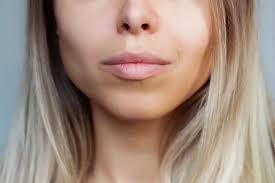In the world of cosmetic surgery, Buccal Fat Removal in Abu Dhabi has emerged as a transformative procedure, offering patients a more sculpted, contoured appearance. This procedure has gained significant popularity, especially among those looking to achieve a chiseled, model-like face. But what exactly is buccal fat removal, and how does it affect the overall appearance of a person’s face? In this article, we will explore the science behind buccal fat removal, its benefits, risks, and how it can dramatically alter facial aesthetics.
1. What is Buccal Fat Removal?
Buccal fat removal is a cosmetic procedure that involves the removal of fat from the buccal fat pads—two distinct pockets of fat located in the lower part of the cheeks. These fat pads are present in everyone and contribute to the rounded, fuller appearance of the face, particularly in the cheeks.
While some individuals naturally have larger buccal fat pads that contribute to a rounder face, others may desire more prominent cheekbones or a leaner facial appearance. Buccal fat removal surgically reduces these fat pads, allowing the underlying bone structure, such as the cheekbones and jawline, to become more noticeable.

2. The Anatomy of Buccal Fat Pads
The buccal fat pads are located deep within the cheeks, behind the muscles responsible for chewing (the buccinator muscles). They are not directly attached to the skin but are embedded within the soft tissue of the face. The size of these fat pads varies between individuals, and their prominence is often linked to genetic factors.
These fat pads play a crucial role in cushioning the facial muscles and helping with the smooth movement of the face. They also provide facial fullness, contributing to a youthful, soft appearance. However, in some cases, excessive buccal fat can create a “chubby” or “baby-faced” look, which some people wish to change for a more defined facial structure.
3. How Buccal Fat Removal Works
Buccal fat removal is a relatively simple and minimally invasive procedure. During the surgery, a surgeon makes small incisions inside the mouth, typically on the inner part of the cheek. Through these incisions, the surgeon carefully locates and removes the buccal fat pads.
The procedure is done under local anesthesia, so the patient remains awake but feels no pain. After the fat pads are removed, the incisions are sutured closed, and the healing process begins. While the procedure itself typically takes around 30 minutes to an hour, patients can often return to their normal activities within a week, with full recovery occurring in about 4-6 weeks.
4. Aesthetic Changes and Facial Contouring
One of the main reasons people seek buccal fat removal is to achieve improved facial contouring. By removing excess fat from the cheeks, the underlying bone structure is more visible, giving the face a more sculpted and angular appearance. The reduction in cheek volume can help highlight the cheekbones, jawline, and chin, contributing to a more balanced and defined facial shape.
For many patients, buccal fat removal creates a contoured, “high-cheekbone” look, which is often considered a desirable aesthetic. It can give the face a more mature, elegant appearance, particularly for those who feel that their round face makes them look younger or less sculpted.
5. Who is a Good Candidate for Buccal Fat Removal?
Buccal fat removal is not a one-size-fits-all procedure. The best candidates are individuals who have excess buccal fat pads that make their face appear overly round or full.
- Ideal Candidates: People with a fuller, rounder face who want a more sculpted appearance are typically ideal candidates. In particular, patients who have sufficient bone structure, such as well-defined cheekbones and jawlines, can benefit the most from this procedure.
- Age Considerations: Although there is no strict age limit, buccal fat removal is generally not recommended for very young individuals, as the face continues to mature and change over time. The procedure is most effective when performed on adults who have reached full facial development.
- Health Factors: Candidates should be in good overall health, without any severe medical conditions that could impact the healing process or the risks associated with surgery.
6. The Benefits of Buccal Fat Removal
The impact of buccal fat removal goes beyond simple aesthetic enhancement. Here are some of the most significant benefits of this procedure:
- Enhanced Facial Definition: One of the primary reasons people opt for buccal fat removal is to enhance the definition of their facial features. The removal of excess fat allows the natural contours of the face, such as the cheekbones, jawline, and chin, to become more prominent.
- Youthful Appearance: For many individuals, excess buccal fat gives a “chubby” appearance, which can sometimes be associated with a less mature look. Removing this fat can provide a more mature, sophisticated appearance.
- Improved Self-Confidence: Many people seek buccal fat removal for cosmetic reasons, aiming to feel better about their appearance. A more contoured face can improve self-esteem, particularly for those who have long struggled with a round or fuller face.
- Long-Lasting Results: Unlike some temporary procedures, such as fillers, the results of buccal fat removal are permanent. Once the fat is removed, it does not grow back, meaning that patients will enjoy their new, contoured look for years to come.
7. Risks and Considerations of Buccal Fat Removal
While buccal fat removal is a relatively safe procedure, there are potential risks and considerations that patients should be aware of before undergoing the surgery.
- Over-removal: One of the main risks associated with buccal fat removal is the possibility of over-removal, which can leave the face looking hollow or sunken. To avoid this, it is essential to have a skilled and experienced surgeon who can remove just the right amount of fat.
- Infection: As with any surgical procedure, there is always a small risk of infection. However, this risk is minimized by ensuring that the procedure is performed in a sterile environment and that patients follow proper aftercare instructions.
- Scarring: While the incisions for buccal fat removal are made inside the mouth, there is still a small risk of scarring. However, because these incisions are located in an area that is not visible, the scarring is usually minimal and not noticeable.
- Uneven Results: There is also a risk of asymmetry if the fat is not removed evenly from both sides of the face. This is another reason why selecting a highly experienced surgeon is crucial to achieving the best results.
8. Post-Operative Care and Recovery
After undergoing buccal fat removal, patients can expect a short recovery period. While there may be some swelling and discomfort in the first few days, these symptoms usually subside quickly. To ensure optimal healing, patients should:
- Follow any prescribed post-operative care instructions carefully.
- Avoid strenuous activities for a few weeks.
- Stick to a soft-food diet for the first few days to avoid irritation.
- Maintain proper oral hygiene to prevent infections in the mouth.
Most people are able to return to their normal activities within a week, though full recovery can take several weeks, with the final results becoming visible around 2-3 months post-surgery.
9. Buccal Fat Removal vs. Other Facial Contouring Procedures
Buccal fat removal is one of several options for facial contouring. However, it differs from other treatments, such as dermal fillers or liposuction, in several ways:
- Non-Invasive Alternatives: Procedures like dermal fillers and Botox can be used to contour the face without surgery. These non-invasive treatments are less risky but offer temporary results compared to the permanent effects of buccal fat removal.
- More Permanent Solution: Unlike other methods, such as liposuction or injectable fillers, buccal fat removal offers long-term results. Once the fat is removed, it does not return, providing a more permanent solution for those seeking facial definition.
10. Conclusion: The Lasting Impact of Buccal Fat Removal
Buccal fat removal is an effective and permanent way to achieve a more sculpted, defined facial appearance. With its ability to enhance cheekbone prominence, reduce facial fullness, and create a more mature look, this procedure is a popular choice for individuals looking to transform their faces. However, as with any surgery, it is essential to consult with an experienced, board-certified surgeon to ensure that the procedure is performed safely and yields the best possible results.
FAQs
- How long does it take to see results after buccal fat removal? Results typically begin to show within a few weeks, but final results may take 2-3 months to fully appear.
- Is buccal fat removal reversible? No, once the fat is removed, it cannot be replaced. The procedure offers permanent results.
- How much fat is removed during buccal fat removal? The amount of fat removed varies depending on the patient’s needs and goals, but the surgeon will aim to remove just enough to achieve a balanced, contoured look.
- Can buccal fat removal make me look older? If too much fat is removed, it can lead to a hollow or gaunt appearance, potentially aging the face. It’s essential to have the procedure done by a skilled surgeon to avoid this.
- Is buccal fat removal painful? The procedure is done under local anesthesia, so there is minimal discomfort during the procedure. Some swelling and mild discomfort may occur after surgery.
- Who is not a good candidate for buccal fat removal? Individuals with thin or already angular faces, or those with health conditions that affect healing, may not be suitable candidates.
- Can buccal fat removal be combined with other procedures? Yes, many patients combine buccal fat removal with other facial surgeries, such as a facelift or rhinoplasty, to enhance overall facial aesthetics.
